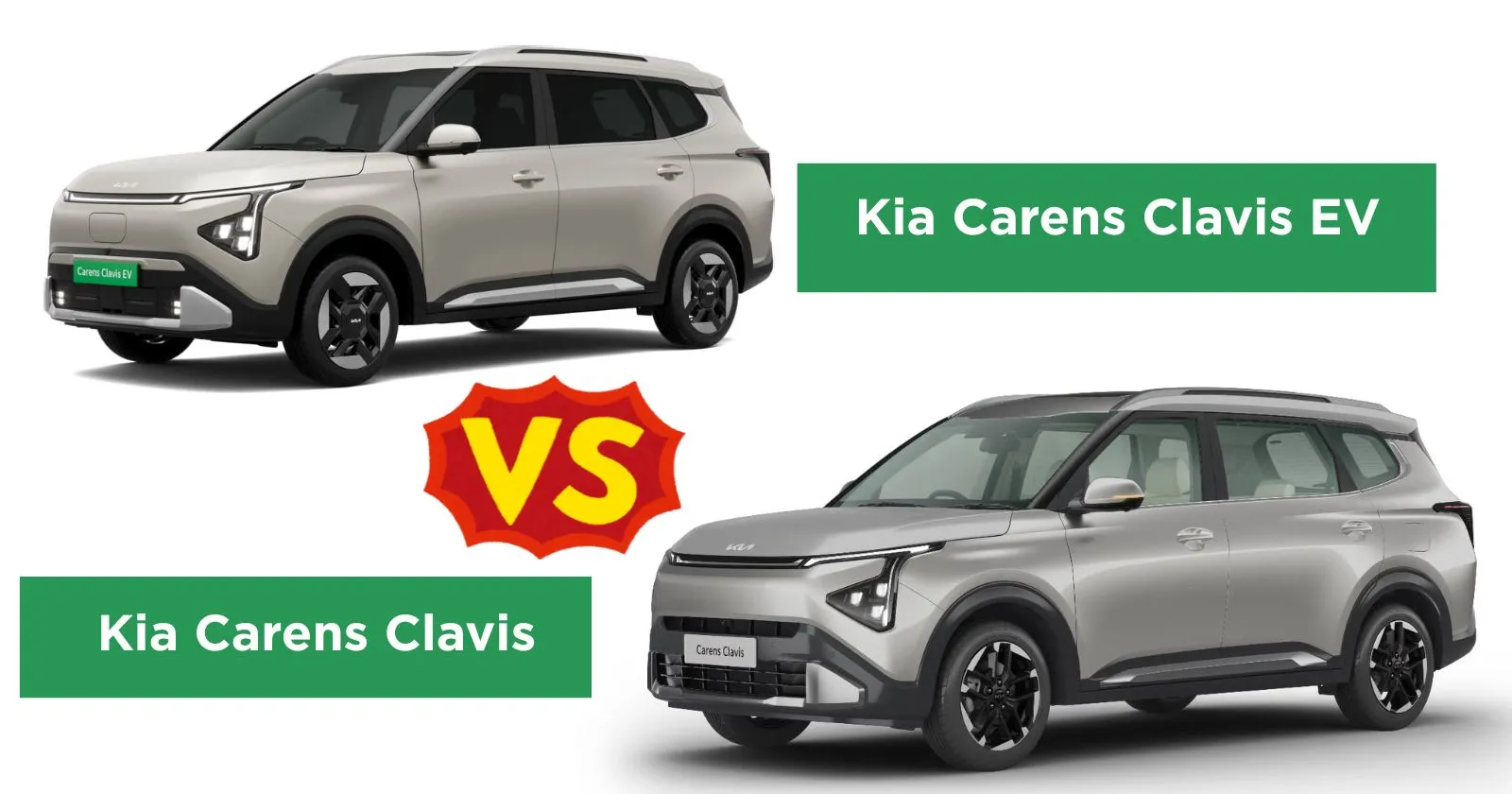
While the Carens Clavis and the Carens Clavis EV look similar, key differences lie in their powertrains, charging tech, and in-cabin features.

Share Post

While the Carens Clavis and the Carens Clavis EV look similar, key differences lie in their powertrains, charging tech, and in-cabin features.
The Kia Carens Clavis is now available in two distinctly powered formats: the traditional ICE (internal combustion engine) version and a new all-electric variant. While the exterior styling and cabin layout are closely matched, the underlying technologies, from powertrain and charging to cabin functionality, draw clear lines between the two.
The ICE-powered Carens Clavis is offered with three 1.5-litre engine options. These include a 113 bhp naturally aspirated petrol, a 114 bhp diesel, and a 158 bhp turbo-petrol. Gearbox options include 6-speed manual, 6-speed torque converter (for diesel), a 6-speed iMT, and a 7-speed dual-clutch transmission (for turbo-petrol).

In contrast, the Carens Clavis EV uses a single front-mounted electric motor paired with two battery pack choices. The 42 kWh version produces 133 bhp and 255 Nm of torque, while the 51.4 kWh battery delivers a higher 169 bhp output, maintaining the same torque.

The electric Carens Clavis offers two range options:
Charging flexibility is built in, with support for:
An 11 kW charger replenishes the smaller battery in 4 hours and the larger one in 4 hours and 45 minutes. The 100 kW DC charger brings the charge from 10 to 80 per cent in just 39 minutes.
By contrast, the ICE variants rely on conventional petrol or diesel refuelling, still unmatched in terms of refilling speed and widespread availability, but miss out on the silent, emissions-free appeal of electric mobility.
Both versions of the Carens Clavis offer a feature-rich cabin with high-end equipment including:

The Carens Clavis EV builds on this with some thoughtful tweaks. The gear selector has been relocated to the steering column, freeing up space for a floating centre console and additional storage. It also introduces EV-specific additions like paddle shifters for four levels of regenerative braking, a Virtual Engine Sound System (VESS) to alert pedestrians, and Vehicle-to-Load (V2L) functionality, which allows the vehicle to power external appliances, a useful tool for outdoor trips or emergencies. However, both the MPVs still don’t offer wireless Apple CarPlay and Android Auto.

Both versions get Kia Connect with support for OTA updates, voice commands, and Alexa integration. Features such as USB-C ports, ambient lighting, and smartphone connectivity ensure digital convenience. The EV, however, may see slightly more real-time software usage, especially related to battery and charging management, which makes the presence of over-the-air updates even more relevant.
The ICE Carens Clavis is available in seven trims, allowing buyers to tailor their budget and feature preferences. Prices range from ₹11.50 lakh to ₹21.50 lakh (ex-showroom), making it more accessible to a broader audience.

The EV is offered in just three trims, HTK+, HTX, and HTX+, with prices starting at ₹17.99 lakh and going up to ₹24.49 lakh. However, even the entry-level EV variant comes packed with features that are only available in the mid to top-spec ICE variants. This structured lineup gives EV buyers more standard equipment upfront, albeit at a higher base price.

The Carens Clavis EV stands out for buyers looking for a tech-rich, efficient, and quiet family vehicle with EV-specific features like V2L and regen braking. It’s also better suited to consumers who have regular access to charging and are open to the future of electric driving.
The ICE version, with its range of engines and transmission options, remains a more versatile and cost-effective option, especially for long-distance or highway users and those without home charging infrastructure.
Auto Sales December 2025: Ashok Leyland Reports 27% YoY, 18% MoM Growth
Acko Drive Team 1 Jan, 2026, 2:01 PM IST
Maruti Suzuki To Defer Price Increase To End Of January Amidst Strong Momentum For Small Cars
Acko Drive Team 1 Jan, 2026, 1:23 PM IST
Auto Sales December 2025: Kia Registers 15% YoY Growth In CY2025, Records Best-Ever December Volumes
Acko Drive Team 1 Jan, 2026, 12:36 PM IST
Tata Motors Delivers Strong Q3 FY26 as PVs, CVs Sales Gain Momentum
Acko Drive Team 1 Jan, 2026, 12:24 PM IST
Auto Sales December 2025: Hyundai Achieves 6.6% YoY Growth
Acko Drive Team 1 Jan, 2026, 12:24 PM IST
Looking for a new car?
We promise the best car deals and earliest delivery!
